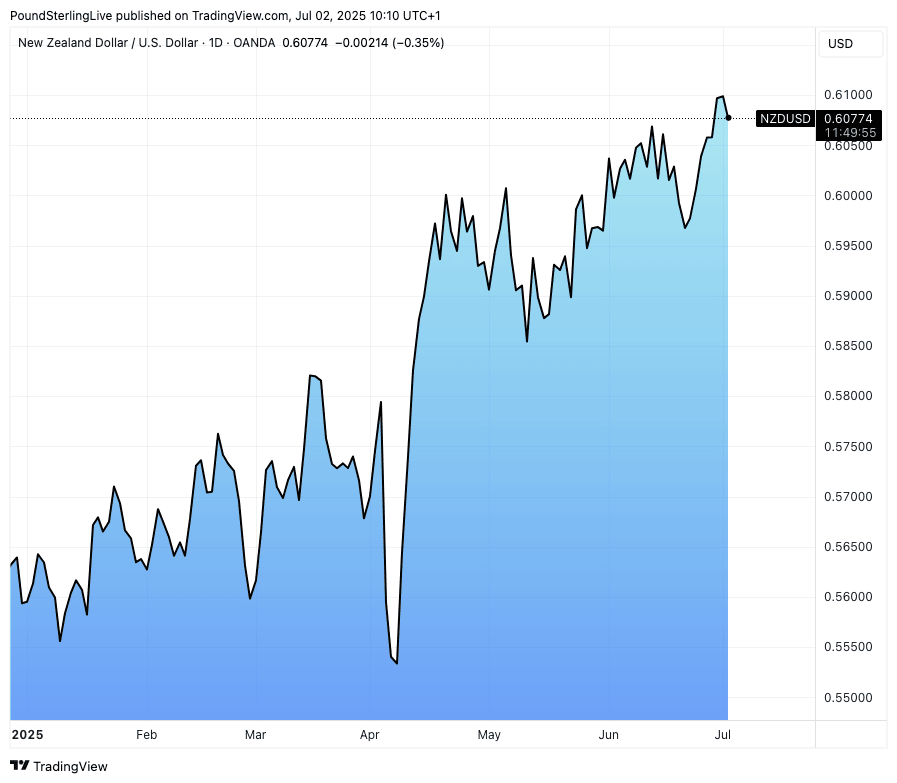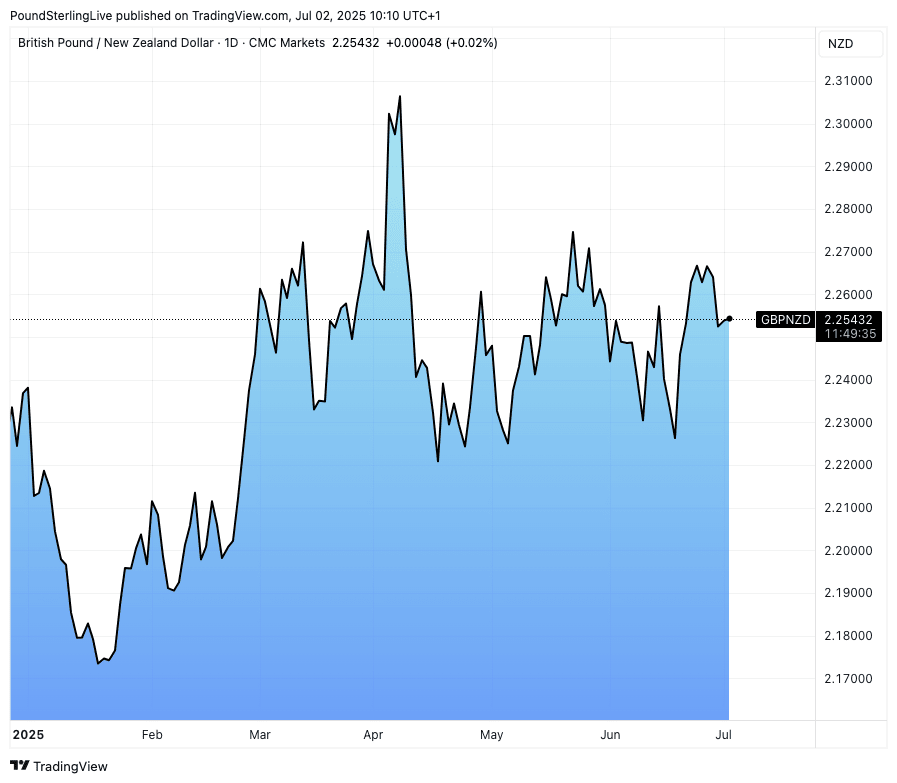
Image © Adobe Images
"The second quarter and beyond could be more challenging for the kiwi."
The New Zealand dollar, which has outperformed its commodity-linked peers so far this year, is likely to face stiffer headwinds in the second half of 2025, according to analysts at Société Générale.
The kiwi has been the top-performing major dollar in 2025, outpacing advances by both the Canadian and Australian dollars amid broad-based U.S. dollar weakness.
Stronger-than-expected domestic growth, with first-quarter GDP surprising to the upside, helped close the negative growth gap with the United States, driving gains in NZD/USD earlier in the year.
In a mid-year foreign exchange update, Société Générale cautions that momentum may fade:
"The second quarter and beyond could be more challenging for the kiwi.
"New Zealand's economy remains highly exposed to external risks, especially through its trade ties with China and sensitivity to commodity market conditions."
Above: NZD/USD at daily intervals.
Tariff-related uncertainty and fragile geopolitical dynamics could undermine growth prospects in the months ahead, potentially curbing further appreciation of the currency against the greenback.
Near-term, eyes are turning to the July 09 tariff deadline facing America's trading partners. While not everyone is expected to get a trade deal, the market assumption is that the main players will.
Any disappointment here, or a more beligerent tone from Trump, risks reigniting the negative sentiment that saw NZD drop against many G10 peers in early April.
Above: GBP/NZD surged as NZD weakened on peak tariff anxiety in early April.
While NZD/USD continues to be shaped largely by relative growth expectations, cross-currency dynamics, particularly AUD/NZD, are increasingly influenced by shifts in yield differentials, according to the research.
Yield differentials are the difference between the returns given by government debt (bonds) in various countries. It is typically a potent driver of exchange rate direction.
The spread between Australian and New Zealand bond yields has narrowed sharply since the start of the year, with NZD yields briefly overtaking those of the AUD. This would typically be associated with NZD upside.
However, Soc Gen expects the trend to reverse:
Following a 25-basis-point rate cut in May, the Reserve Bank of New Zealand (RBNZ) has indicated a more dovish policy path compared with the Reserve Bank of Australia (RBA), citing risks from tariffs, trade tensions and global instability.
"The market is currently pricing in only around 40 basis points of further RBNZ cuts by early 2026, but we believe the risks are skewed toward more easing," the bank noted. "This should restore the AUD-NZD yield advantage and support a bullish outlook for the cross."


